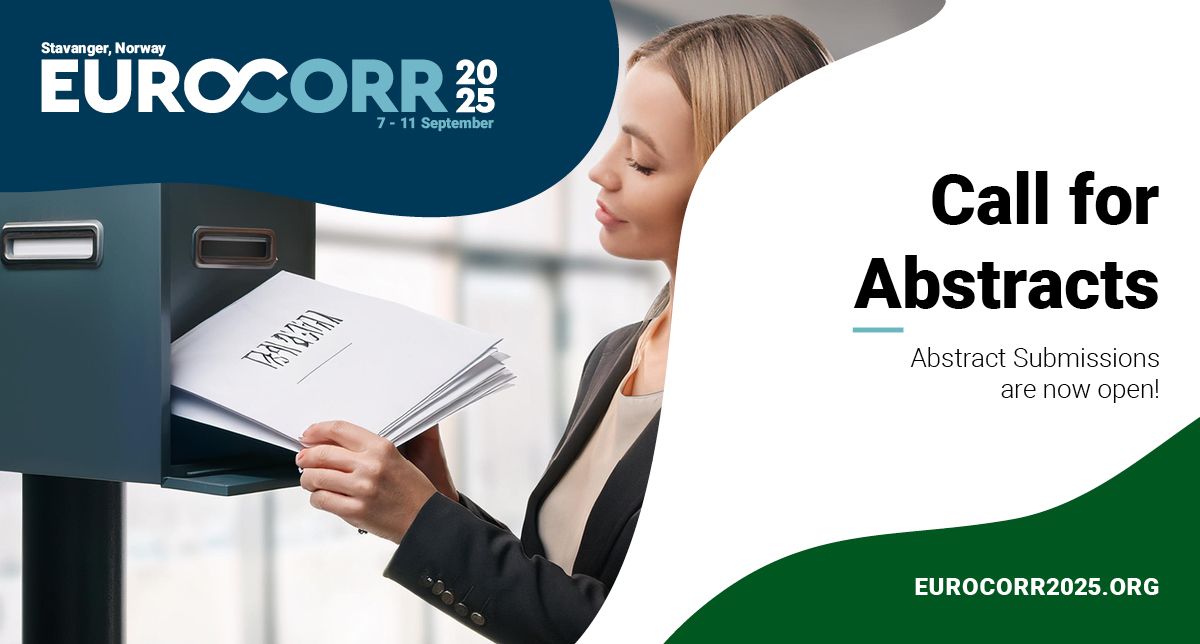
Abstract submisson
The Abstract Submission portal for last minute posters is now open.
Deadline for late poster submission: 1 June 2025
The call for abstracts is open and the available topics/session are listed below. Please prepare your abstract as PDF-file (max. 1 page and 1 MB file size using the Template_EUROCORR2025). The abstract should explicitly mention objectives, results and conclusions and/or significance of the work. Accepted abstracts will be published for all conference participants as digital “book of abstracts” (conference proceedings as PDF-file) shortly before the conference.
Abstracs submissions for last minute posters are now open!
Important deadlines
27 January 2025
Final Deadline for lecture and poster submission
Reviewing process will begin
1 – 4 April 2025
Authors confirmation with link to register as a speaker
1 June 2025
Registration deadline for authors / early bird deadline
Abstracs submissions are now open!
The call for abstracts is open and the available topics/session are listed: here (link to sessions on eurocorr2025.org). Please prepare your abstract as PDF-file (max. 1 page and 1 MB file size using the Template_EUROCORR2025). The abstract should explicitly mention objectives, results and conclusions and/or significance of the work. Accepted abstracts will be published for all conference participants as digital “book of abstracts” (conference proceedings as PDF-file) shortly before the conference.
The selection of the contributions will be based on the review of the abstracts by the International Scientific Committee. And please note that several prizes will be awarded during EUROCORR for the best poster and oral presentation of early-career researchers (e.g., EFC Poster Prize, Best Oral Presentation Award, Nuclear Corrosion Oral & Poster Prize).
Three presentation options can be selected during abstract submission:
- Lecture (20 min): Regular oral presentation (15 min talk plus 5 min for Q&A).
- Poster: “Classical” poster presentation.
- Short Lecture (5 min): Short oral presentation (3 min talk with a maximum of 4 slides incl. title slide plus 2 min for Q&A).
Shortly after the conference, we will also provide a digital “book of presentations” to all registered conference attendees, containing those presentation files made available by the authors (voluntarily). Technical details for the process will be given to all presenters in due time.
Important: The conference registration fee cannot be waived for authors!
The abstracts need to be submitted until 17th of January 2025 via the Converia conference management system (of Dechema).
Topics
Working Party Sessions
| Chair Prof. Dr. Günther SCHMITT IFINKOR Iserlohn, Germany |
Vice-Chair Dr. Wolfgang HATER Senior Corrosion Specialist Kaarst, Germany |
|
Chair PD Dr. Mathias GALETZ Dechema Frankfurt, Germany |
Vice-Chair D.Sc (Chem.) Juho LEHMUSTO Åbo Akademi University Turku, Finland |
|
Secretary Lisa KOLIOTASSIS Dechema Frankfurt, Germany |
Vice-Chair Dr. Wolfgang HATER Senior Corrosion Specialist Kaarst, Germany |
More information
|
Chair Stefan RITTER Paul Scherrer Institute (PSI) Villigen, Switzerland |
Vice-Chair Dr. Laure MARTINELLI CEA Saclay Gif-sur-Yvette, France |
|
Chair Prof. Christine BLANC Université de Toulouse CNRS Toulouse, France |
Vice-Chair Prof. Dirk ENGELBERG University of Manchester Manchester, UK |
|
Chair Prof. Dr. Phillippe MARCUS CNRS – Chimie ParisTech Paris, France |
Vice-Chair Dr. Rob LINDSAY University of Manchester Manchester, UK |
|
Chair Prof. Iris DE GRAEVE Vrije Universiteit Brussel Brussels, Belgium |
Vice-Chair Dr. Noémie OTT Eastern Switzerland University of Applied Sciences (OST) Switzerland |
|
Chair Prof. Dr.-Ing. Daniela ZANDER RWTH Aachen University Aachen, Germany |
Vice-Chair Dr. Yaiza GONZALEZ GARCIA Delft University of Technology The Netherlands |
|
Chair Prof. Phillippe REFAIT Université de La Rochelle La Rochelle, France |
Vice-Chair Dr. Shiladitya PAUL TWI & University of Leicester Cambridge, UK |
|
Chair Dr. Pierangela CRISTIANI RSE – Ricerca sul Sistema Energetico S.p.A. Milan, Italy |
Vice-Chair Régine BASSÉGUY Laboratoire de Génie Chimique & CNRS Toulouse, France |
| Chair Prof. Dr.-Ing. Michael RAUPACH RWTH Aachen University Aachen, Germany |
Vice-Chair Dr. Fabio BOLZONI Politecnico di Milano Milan, Italy |
| Secretary Dr. Gino EBELL BAM Berlin, Germany |
|
Chair George WINNING Corrosion and Chemical Consulting Ltd. Egham, UK |
Vice-Chair Jon KVAREKVÅL Institute for Energy Technology Oslo, Norway |
|
Secretary Pilar ESTEBAN |
|
|
Chair Prof. Marie-Georges OLIVIER Université de Mons, CRIM Mons, Belgium |
Vice-Chair Dr. Marta MOHEDANO SÁNCHEZ Universidad Complutense de Madrid Madrid, Spain |
|
Secretary Michele |
|
|
Chair Prof. Dr. Phillipp SCHEMPP TH Köln – University of Applied Sciences Cologne, Germany |
Vice-Chair Gino DE LANDTSHEER Borealis Kallo, Belgium |
|
Chair Jérôme CROUZZILAC BAC Corrosion Control Voisins-le-Bretonneux, France |
Vice-Chair Anne Marie GROLLEAU DCNS Research Cherbourg-Octeville, France |
|
Vice-Chair Marco ORMELLESE Politecnico di Milano Milano, Italy |
|
|
Chair Elizabeth SZALA Aluminium Duffel Brussels, Belgium |
Vice-Chair Dr. Jean-Louis BAUDOIN Atotech France |
|
Secretary Vishant GARG CNRS – Chimie ParisTech Paris, France |
|
|
Chair Dr. Manel RODRIGUEZ RIPOLL AC2T research GmbH Vienna, Austria |
Vice-Chair Dr. Anna IGUAL MUNOZ EPFL Lausanne, Switzerland |
|
Chair Dr.-Ing. Jürgen HEINEMANN DIN CERTCO Berlin, Germany |
Vice-Chair Dr. Johann Wilhelm ERNING BAM Berlin, Germany |
|
Chair Dr. Delphine NEFF CEA Saclay & CNRS Gif-sur-Yvette, France |
Vice-Chair Prof. David WATKINSON Cardiff, UK |
|
Secretary Sabrina GRASSINI Politecnico di Torino Torine, Italy |
|
|
Chair Prof. Dr. Mikhail ZHELUDKEVICH HZG Geesthacht, Germany |
Vice-Chair Dr. Martin BENEKE Airbus Bremen, Germany |
|
Chair Prof. Dr. Rajan AMBAT Technical University of Denmark Kgs. Lyngby, Denmark |
Vice-Chair Balint MEDGYES Budapest Univ. of Technology and Economics (BME) Ingolstadt, Germany |
|
Vice-Chair Markus MEIER Zestron |
|
|
Chair Dr. Ralph BÄSSLER BAM Berlin, Germany |
Vice-Chair Dr. Bjørn MORLAND Institute for Energy Technology Kjeller, Norway |
|
Chair Prof. Johan TIDBLAD RISE Kista, Sweden |
Vice-Chair Dr. Tomáš PROŠEK University of Chemistry and Technology Prague Czech Republic |
|
Chair Dr. Marc WILMS Shell Amsterdam, The Netherlands |
Vice-Chair Prof. Polina VOLOVITCH CNRS – Chimie ParisTech Paris, France |
|
Secretary Jean KITTEL IFP Energies Nouvelles Lyon, France |
|
Joint Sessions and Workshops
|
Prof. Dr. Mikhail ZHELUDKEVICH |
Prof. Dr. Marie-Georges OLIVIER |
|
Prof. Arjan MOL |
Rob LINDSAY |
|
Dr. Natalia KONCHAKOVA |
|
|
Prof. Dirk ENGELBERG |
Elizabeth SZALA |
|
Rajan AMBAT |
Polina VOLOVITCH |
|
Marc VILMS |
Marie-Georges OLIVIER |
|
Patrik SCHMUTZ |
|
Task Force Workshops
| Prof. Iris DE GRAEVE |
Dr. Reynier REVILLA |
| Dr. Patrik SCHMUTZ |
Dr. Sviatlana LAMAKA |
| Dr. Martina CIHOVA |
Plenary speakers
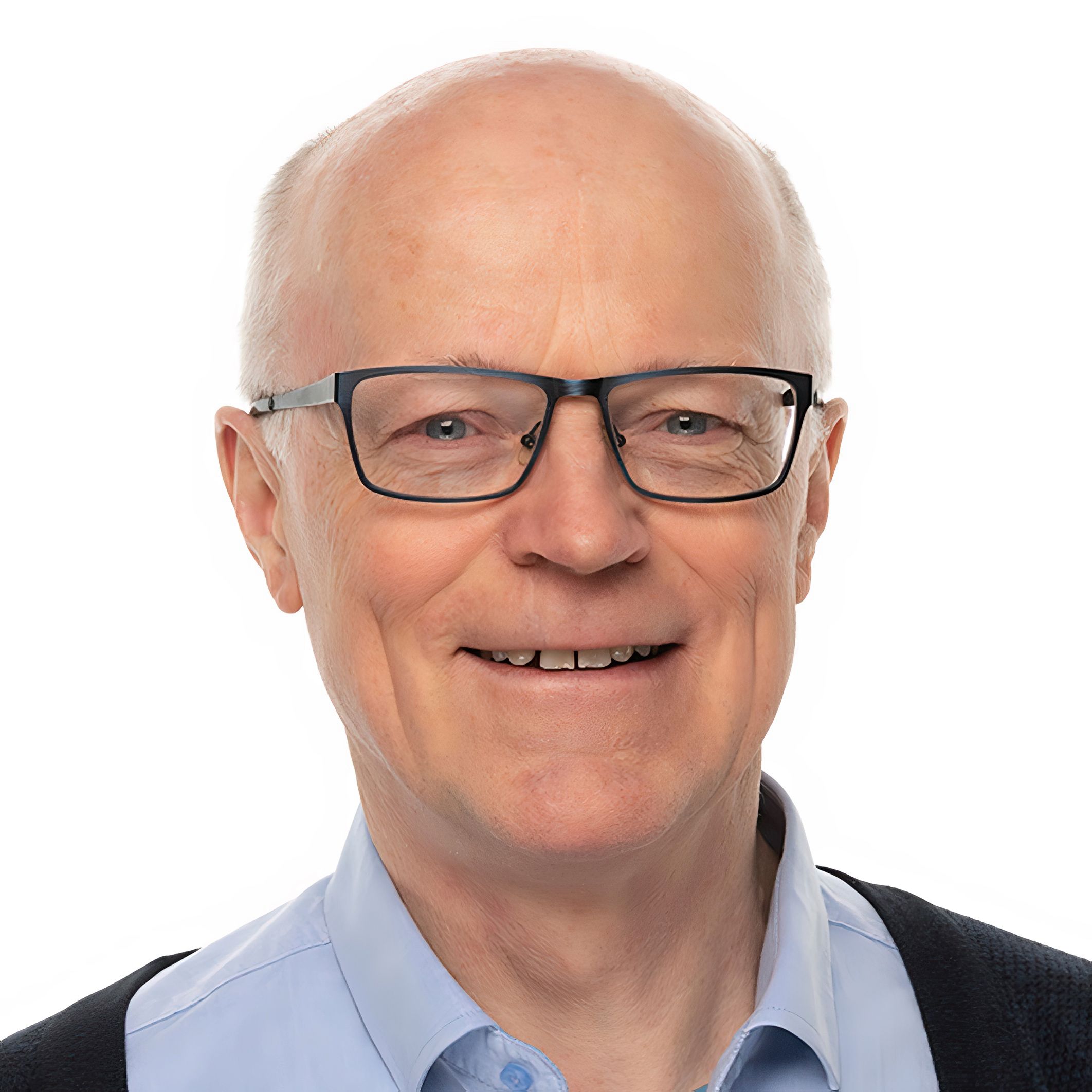
Arne Dugstad
Arne Dugstad is Chief Scientist at Institute for Energy Technology (IFE) where he has been working for more than 40 years. Main research areas are dense phase CO2 transport (CSS), corrosion in flexible pipelines, CO2 and H2S corrosion in oil and gas systems and MEG regeneration. Dugstad received the NACE fellow award in 2002.
CO₂ Transport – when becomes corrosion an issue?
Reasonably clean and dry CO2 originating from CO2 reservoirs and natural gas sweetening processes has for decades been safely transported in pipelines and used for EOR. A number of new issues need to be better understood, and the associated risk effectively managed, to ensure safe transport of impure CO2 from anthropogenic sources. Impurities (H2S, SOx, NOx, O2, H2S, NH3,..) present in the CO2 stream can react and form corrosive aqueous phases containing acids like H2SO4 and HNO3. The presentation will give an overview on how the assumed safe CO2 specification have been changing with time as more and more experimental data and better understanding have become available. The most important impurity reactions will be described and off set conditions and the challenge of monitoring the CO2 stream composition will be discussed.
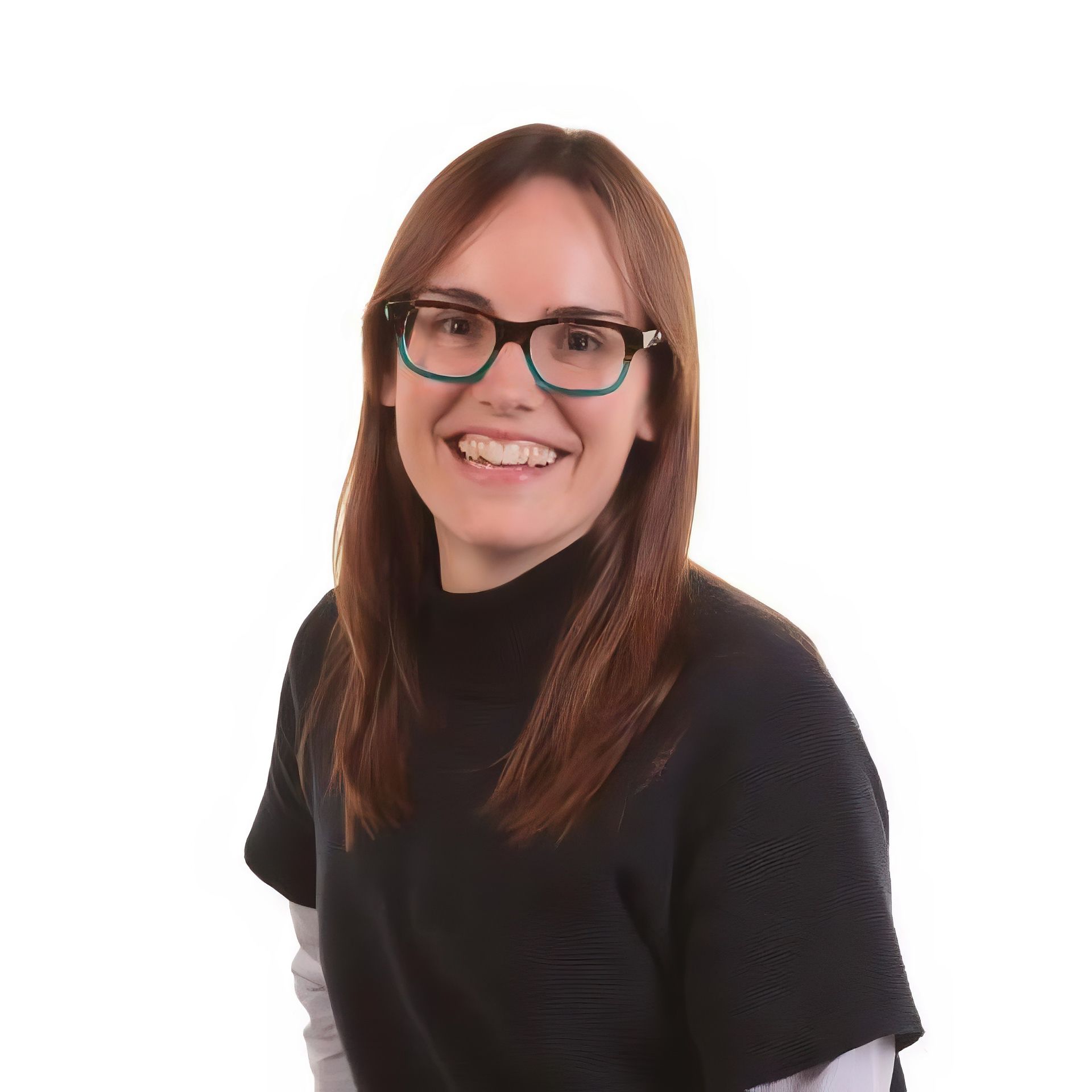
Nuria Espallargas
Nuria Espallargas is a Professor at the Norwegian tribology center Department of Mechanical and Industrial Engineering (MTP) Norges teknisk-naturvitenskapelige universitet (NTNU). She has 20 years of research experience in surface engineering, chemistry, and tribology. Since 2011 she is the NTNU leader of the Norwegian Tribology Centre. Her research lies in the fields of surface chemistry and engineering, lubricants, tribocorrosion and nano-tribology. Her recent work in tribocorrosion focuses on improving the lifetime of components used in offshore renewable energy systems
The role of tribocorrosion and multidegradation on the green energy transition While innovative Offshore Renewable Energy (ORE) technologies are gaining popularity, the technicalities of operating them in hostile environment remain complex and challenging jeopardizing the deployment of these very important technologies for the future generations. To succeed in the green energy transition, robust and reliable materials are needed for offshore conditions. Materials used in ORE devices suffer of tribocorrosion and multidegradation due to direct exposure to the marine environment in combination with mechanical loads resulting in tribocorrosion failures. Tribocorrosion can be considered a young research area which has experienced a boosting interest and development in the last 25 years due to the increasing demand from engineering systems that are subjected to the combined action of wear and corrosion (i.e. biomedical implants, mining equipment, manufacturing, nuclear power plants, food processing devices or marine equipment). To address this complex problem, which cannot be approached by simply considering both wear and corrosion separately, dedicated tribocorrosion research has been developed. In this talk, you will be introduced to tribocorrosion and multidegradation of materials with focus on passive metals and alloys, which are the most typically used materials in Offshore Renewable Energy devices. Their current challenges and methodologies with improved tools for material selection and validation will be discussed to help boosting the creation of the next generation of materials for Offshore Renewable Energy devices to overcome the present energy and environmental challenges.
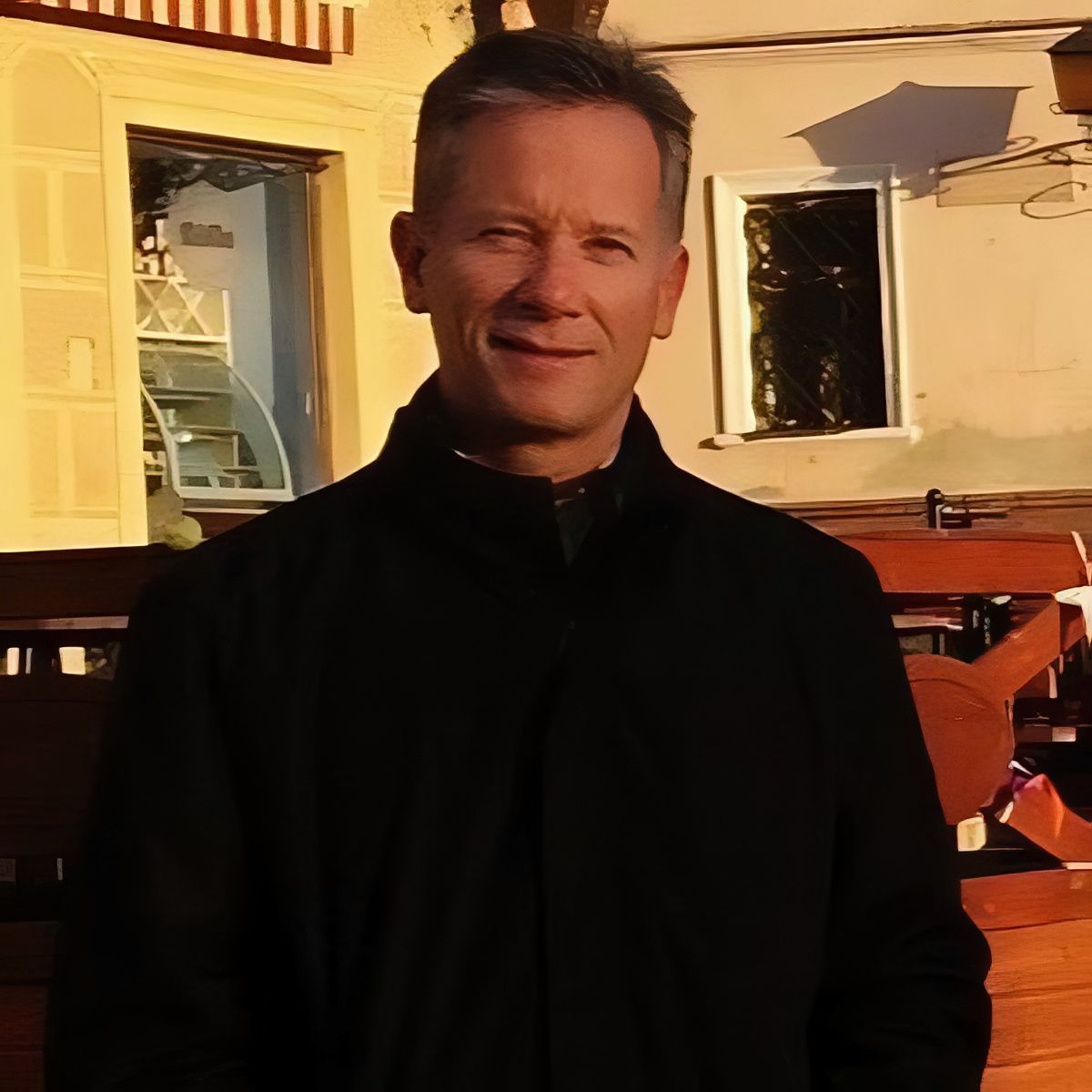
John J. Dunn
BS/MS– Metallurgical Engineering – Carnegie Mellon University / University of Pittsburgh
40 Year Career with Allegheny Ludlum / ATI, retired 2020
Major focus on the development of new CRA’s, used by various industries such as Oil & Gas, Power Generation and CPI.
11 new alloy patents
Over 40 technical papers and presentations
Lessons Learned for New CRA Product Development
In considering the last half-century of new CRA (Corrosion Resistant Alloy) development, I believe that at least in some cases, there were better ways to do it. This presentation aims to address some of the deficiencies in the Design, Implementation and Commercialization phases of an alloy development program. Questions are raised on when and how to transition from Concept to Market success. Some common myths on new product development are dispelled. The expressed opinions serve to offer insight into best practices for a successful new CRA development that can be appreciated by both manufacturers and end users.
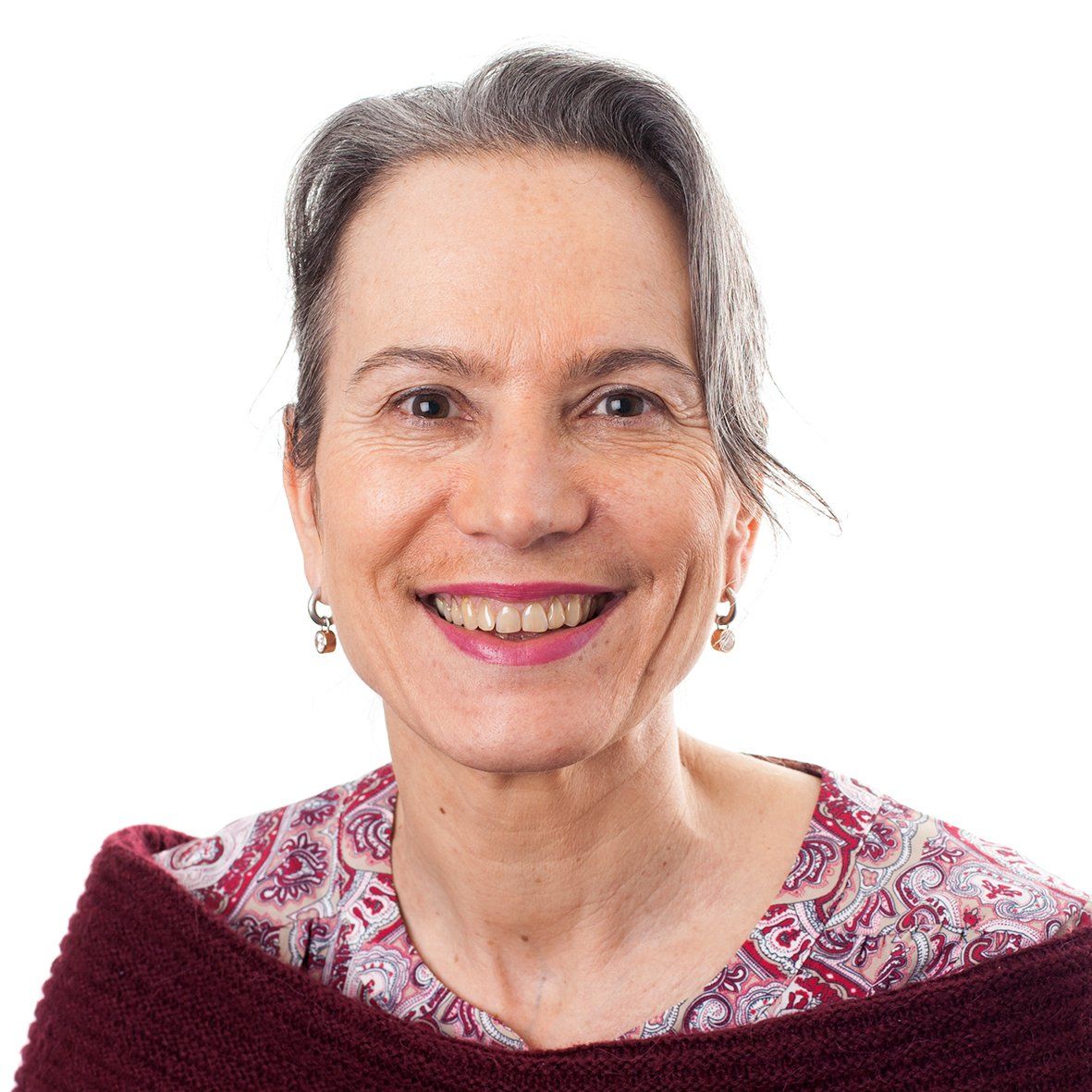
Vigdis Olden
Vigdis Olden is a senior research scientist at SINTEF Industry in Trondheim, Norway. Her main field is hydrogen embrittlement of metallic materials. She is working in a research group where a large part of the project portfolio is related to the structural integrity of subsea infrastructure in oil and gas, including hydrogen.
SUBSEA PIPELINES – HYDROGEN EMBRITTLEMENT CHALLENGES IN NATURAL GAS AND HYDROGEN GAS TRANSPORT
«Since the late 1990s, hydrogen embrittlement in Norwegian subsea infrastructure for natural gas transport, caused by hydrogen from cathodic protection, has posed significant challenges for pipeline operators and energy companies. Through intensive research and development, the industry has learned to manage and mitigate these issues, incorporating the acquired knowledge into design and operational guidelines.
Currently, the industry is exploring the feasibility of repurposing this subsea infrastructure for 100% hydrogen gas transport. The existing Norwegian pipeline network spans 8,900 km and is primarily constructed from higher strength steel than onshore pipelines, making it more susceptible to hydrogen embrittlement. These pipelines are also designed for different loads and operating environments compared to onshore pipelines. The anticipated operating pressures and purity of hydrogen gas in the Norwegian subsea network are 150-200 bar and 100% hydrogen, respectively, which are higher than those in existing hydrogen pipelines.
Since 2019, SINTEF has been conducting the HyLINE I and HyLINE II projects to establish fundamental knowledge about the effects of hydrogen gas on pipeline steels and their weldments, aiming to enable the safe and efficient use of both existing and new subsea pipeline infrastructure. The research topics include hydrogen uptake and diffusion, nano- and micro-mechanical characterization, fracture toughness and fatigue, as well as numerical modeling for fracture assessment.
A summary of key findings within these research areas and their interconnections will be presented.»
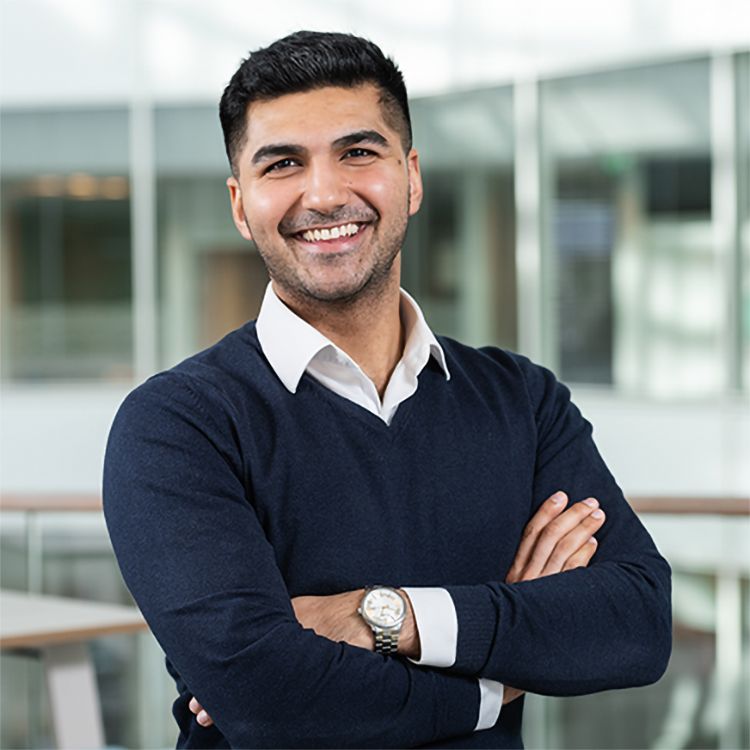
Mahad Nadeem Janjua
Currently working as a Data Science Specialist at Harbour Energy Norge, working on implementing data science & AI solutions at scale within Subsurface & Exploration workstreams. Current implementation focus is on leveraging latest GenAI technologies. er Generation and CPI.
11 new alloy patents
Over 40 technical papers and presentations
AI Trends in the Energy Industry
This talk will explore the evolving role of artificial intelligence in the energy sector, focusing on how emerging technologies are addressing key industry challenges. From optimizing operations to enhancing decision-making, AI is reshaping the way the energy industry operates. The discussion will include examples such as Generative AI for streamlining workflows, Computer Vision for visual data processing, and Natural Language Processing for deriving insights from large datasets. This session will provide a practical overview of how AI is driving innovation in the energy space.
